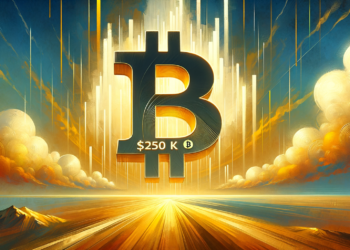Wealth opportunities amid the Middle East war: Will Bitcoin surge?
As energy prices rise, the fiat value of Bitcoin will also rise. The profitability of Bitcoin mining will not change because all miners will face the same increase in energy prices.
Original title: Persistent Weak Layer
Original author: Arthur Hayes
Original translation: zhouzhou, BlockBeats
Editor's note: This article mainly discusses the impact of the Middle East war on the Bitcoin market. Arthur Hayes believes that as the war escalates, the United States will increase its borrowing to support Israel, and the Federal Reserve will expand its balance sheet by printing money, which will drive up the price of Bitcoin. It is speculated that even if the war causes the computing power of Iranian Bitcoin miners to drop to 0%, Bitcoin will hardly have any significant impact. Although the war is highly inflationary, Bitcoin as "digital gold" will still maintain its value.

I went skiing in the South Island of New Zealand in the first two weeks of October. My guide, who was my partner in Hokkaido throughout the snow season last year, told me that New Zealand is one of the best places in the world for backcountry skiing. So I followed his advice and chased exciting ski routes with him in the area around Wānaka. The weather was great and I was able to conquer some spectacular peaks and even cross a massive glacier. Even better, I was able to improve my alpine climbing knowledge on this trip.
Snowstorms in the South Island are so intense that when you are caught in bad weather, you are confined to your home or mountain hut. One afternoon, to kill time, my guide gave us a course in avalanche science. I have taken several avalanche training courses since I first set foot in the British Columbia wilderness as a teenager, but I have never taken a formal certification course.
Avalanche knowledge is both interesting and sobering because the more you learn, the more you understand that skiing in avalanche terrain always involves risk. Therefore, the goal is to try to keep the risk within an acceptable range.
The course explains how different types of snow layers can cause avalanches, one of the most feared being a Persistent Weak Layer (PWL), which can trigger a Persistent Plate Avalanche when stressed.
In avalanche science, a PWL is a specific layer in the snow that remains structurally weak for a long time. These layers significantly increase the risk of avalanches, and are particularly dangerous because they are often buried deep in the snow and can be unstable for weeks or even months until they are triggered by additional stress, such as skiers or new snow. Identifying the presence of a PWL is critical to avalanche forecasting, as these layers are often the culprit for large, deep, and deadly avalanches.
The geopolitical situation in the Middle East after World War II is an example of a Persistent Weak Layer, upon which our modern global order is built, and the trigger for avalanches is often related to Israel. From a financial markets perspective, the “avalanche” we are most concerned about is how energy prices react, how global supply chains will be affected, and whether a hostile conflict between Israel and other Middle Eastern countries, especially Iran or its proxies, could lead to the use of nuclear weapons.
As investors and traders, we are on a ski slope that is both dangerous and exciting. On one hand, major countries or economies are reducing the price of their currencies and increasing the money supply as China officially launches a massive money printing reflation plan. This is exactly when the biggest long-term risks should be taken, and I am obviously referring to cryptocurrencies. However, if the conflict between Israel and Iran continues to escalate, resulting in the destruction of oil fields in the Persian Gulf, the closure of the Strait of Hormuz, or a nuclear conflict, the crypto market may suffer a huge blow. As they often say, war is not investable.
Now I am faced with a decision: continue to sell fiat currency for cryptocurrencies, or reduce my exposure to cryptocurrencies and hold cash or US Treasuries instead? I don’t want to miss out on this opportunity when it may be the beginning of the next leg of the crypto bull market, but at the same time I don’t want to lose capital when Bitcoin plummets 50% in a day because the conflict between Israel and Iran triggers a "persistent sector avalanche" in financial markets. Although Bitcoin can always rebound, I am more worried about some of the "shit coins" (those meme coins) in my portfolio.
Next, I will walk you through the simple scenario analysis I am using to help me decide how to allocate Maelstrom’s portfolio.
Scenario Analysis
Scenario 1: The conflict between Israel and Iran ends with minor military operations, with Israel continuing to assassinate targets and conduct precision strikes, and Iran’s response is a predictable, non-threatening missile attack. No critical infrastructure is destroyed, and no nuclear attack occurs.
Scenario 2: The conflict between Israel and Iran escalates, resulting in the destruction of some or all of the Middle East’s oil infrastructure, the closure of the Strait of Hormuz, or even a nuclear attack.
In Scenario 1, the “persistent weak layer” can still be maintained, but in Scenario 2 it will collapse, triggering an avalanche in financial markets. Let’s focus on the second scenario because it poses a huge threat to my portfolio.
I will focus on assessing the impact of the second scenario on the crypto market, especially Bitcoin, which is the reserve asset of the cryptocurrency market, and the trend of the entire crypto capital market will follow its pace. My concern is that now that the United States has committed to deploying the THAAD missile defense system in Israel, Israel may increase its efforts to strike.
They obviously expected a strong response from Iran, so they asked the United States for help and asked President Biden to send reinforcements. In addition, the more Israel publicly stated that it would not attack Iran's oil or nuclear facilities, the more I believe that this is their real plan. Just on Sunday, the United States announced that it would send US military troops to Israel and deploy an advanced anti-missile system. This is to strengthen Israel's air defense capabilities after the Iranian missile attack. This deployment is extremely rare and shows the seriousness of the tension.
Risk 1: Physical Destruction of Bitcoin Miners
War is extremely destructive, and Bitcoin miners are the most valuable and important physical assets in the cryptocurrency world. So what happens if they are destroyed?
The key assumption in this analysis is to what regions the war will spread. While the war between Israel and Iran is essentially a proxy war between the US/EU and China/Russia, I assume that neither side would want to attack the other directly, and it might be preferable for them to limit the conflict to some unstable countries in the Middle East.
In addition, all major belligerents are nuclear powers, and the United States is the most aggressive military power in the world, but has never directly attacked other nuclear powers to date. It is worth noting that the United States is the only country that has ever used nuclear weapons - through two nuclear strikes on Japan at the end of World War II to force its surrender. Therefore, it is reasonable to assume that this physical conflict will be limited to the Middle East.
The next question is, is there significant Bitcoin mining activity in the Middle East? According to some media reports, Iran is the only Middle Eastern country where Bitcoin mining is thriving, with Iranian Bitcoin miners accounting for about 7% of the global hashrate. What would happen if Iran's hashrate dropped to 0% due to internal energy shortages or missile attacks on its facilities? The answer is: there would be almost no significant impact.
The Bitcoin network is distributed, and even if Iran's hashrate completely disappeared, the Bitcoin network would continue to operate, and miners from other parts of the world would make up for the loss of this hashrate. In fact, the network's self-correcting mechanism will reallocate computing resources, so the loss of mining power in Iran may cause a temporary drop in the network's hashrate, but the overall impact will be limited.

Risk 2: Sharp rise in energy prices
Another question to consider is what would happen if Iran destroyed major oil and gas fields in retaliation? The Achilles’ heel of the Western financial system is its reliance on cheap hydrocarbons. If Iran destroys the state of Israel, the war will not be over. Israel is just the next useful and expendable vassal of Pax Americana.
If Iran wants to deal a real blow to the West, it must destroy hydrocarbon production and prevent tankers loaded with oil from passing through the Strait of Hormuz. Oil prices will soar, taking all other energy prices with them as countries short of oil turn to other energy alternatives to keep their economies functioning. So what happens to the fiat price of Bitcoin? It goes up.
Bitcoin is essentially energy stored in digital form, so as energy prices rise, so does the fiat value of Bitcoin. The profitability of Bitcoin mining will not change, as all miners will face a simultaneous rise in energy prices. Some large industrial miners may lose access to energy because their governments require utilities to invoke force majeure clauses, thus canceling their contracts. However, if the hashrate drops, the difficulty of mining will also drop, which will make it easier for new miners to profit under high energy prices, and the beauty of the system designed by Satoshi Nakamoto will be fully revealed.
If you want a historical example of the resilience of hard currencies during energy crises, look at the performance of gold between 1973 and 1982. In October 1973, the Arab states launched an oil embargo against the United States in retaliation for its support for Israel in the Yom Kippur War. And in 1979, Iranian oil supplies were removed from global markets as a result of the revolution that overthrew the Western-backed Shah of Iran and established the current theocratic regime of the Ayatollahs.

Between 1973 and 1982, the spot price of oil (white line) and the price of gold (yellow line) show similar upward trends relative to the price action of the U.S. dollar (based on 100). Oil prices surged 412% during this period, while gold nearly matched that increase, rising 380%.

This is the price of gold (gold) versus the S&P 500 (red), divided by the price of oil, with an index of 100. Gold only buys 7% of oil, while gold buys 80% less oil.
Assuming that either party removes Middle Eastern hydrocarbons from the market, the Bitcoin blockchain will continue to function and the price will at least maintain its value relative to energy and will certainly rise in fiat currency terms.
Risk Three: Currency Risk
The key question is how the United States will respond to the conflict, with both major political parties steadfast in their support for Israel, and the American elite political system will continue to support Israel no matter how many innocent civilian casualties the Israeli army causes in its efforts to eliminate Iran and its proxies. The United States supports Israel by providing weapons, and since Israel cannot afford the weapons it needs to fight Iran and its proxies, the U.S. government pays for these weapons by borrowing and giving them to Israel, with the funds mainly going to U.S. arms dealers like Lockheed Martin. Since October 7, 2023, Israel has received $17.9 billion in military aid.

The U.S. government buys supplies by borrowing, not saving, which is the message conveyed by the above chart. Providing free weapons to Israel means that the United States, a country with a lot of debt, needs to borrow more. So the question is: if the U.S. national savings are negative, who will buy this debt? The green arrows in the figure mark the cases where the U.S. national net savings are negative. As Luke Gromen points out, these arrows correspond to the following situations:

The arrows on the chart correspond to a dramatic increase in the size of the Fed's balance sheet. As the US continues to borrow more in support of Israel's military operations, similar to the aftermath of the 2008 Global Financial Crisis (GFC) and the COVID-19 lockdown, the balance sheet of the Fed or the commercial banking system will gradually rise to buy these additional debt issuances.
How will Bitcoin react to another significant increase in the Fed's balance sheet?

This is the ratio of Bitcoin price to the Fed's balance sheet, normalized to 100. Since Bitcoin's inception, it has outperformed the increase in the Fed's balance sheet by 25,000%.
We know that war is a catalyst for inflation, and we understand that the US government must borrow to sell bombs to Israel. We also know that the Fed and the US commercial banking system will buy these debts by printing money and expanding their balance sheets. Therefore, as the war escalates, Bitcoin must rise sharply in fiat terms.
So what about Iran’s military spending? Will China and Russia help Iran’s war effort in some way? China is perfectly willing to buy Iran’s hydrocarbons, and China and Russia provide goods to Iran; however, these transactions are not conducted on credit. In a certain ironic sense, I think China and Russia will act as “cleaners.” They will publicly condemn the war, but will not do anything significant to prevent Iran from being destroyed.
Israel does not care about nation-building, and on the contrary will be happy if the Iranian regime collapses as a result of the attack. China in particular can pursue its preferred diplomacy at this time: provide reconstruction funds to the newly formed weak Iranian government, which is basically its Belt and Road Initiative.
In this way, Iran’s rich mineral and hydrocarbon resources will be completely brought into China’s sphere of influence, and China will gain a new captive market in the Global South to dump its excess high-quality, low-priced manufactured goods. In return, Iran will sell cheap energy and industrial goods to China.
China and Russia’s support will not expand the global fiat money supply, if that’s what you call it. Therefore, it will have no discernible impact on Bitcoin’s fiat price. Intensified Middle East conflict will not destroy any of the critical physical infrastructure that supports cryptocurrencies, and as energy prices rise, Bitcoin and cryptocurrencies will appreciate. Tens or even trillions of new money printing will re-energize Bitcoin’s bull run.
Trade with caution
While Bitcoin will rise over time, that doesn’t mean there won’t be wild price swings, or that every altcoin will share in the glory. The key to trading is to properly size your position. For any position I hold, I am prepared for wild market volatility.
As some readers know, I used to invest in several meme coins. When Iran launched its latest round of missiles against Israel, I cut these positions significantly. My position was oversized given the unpredictability of crypto assets in the short term to escalating hostilities. I know my position was oversized because I would be quite annoyed if I lost 100% of my investment in a bunch of meme coins.
Currently, the only meme coin I hold is "Church of Smoking Chicken Fish" (symbol: SCF). I have not yet instructed our head of investment Akshat to slow down or stop deploying capital in the pre-sale token transaction. With Maelstrom's idle fiat, I will stake it on Ethena to earn a good yield while waiting for a good opportunity to enter various liquid altcoins.
The worst thing I could do as a trader is to trade based on my belief that I am "on the right side" of this war. This will lead to ruin, as war will be accompanied by financial repression, asset confiscation, and destruction no matter which side you are on. The best thing to do is to protect yourself and your family from harm, and then move your capital into an investment vehicle that can outperform the depreciation of fiat currency and maintain its energy purchasing power.
Disclaimer: The content of this article solely reflects the author's opinion and does not represent the platform in any capacity. This article is not intended to serve as a reference for making investment decisions.
You may also like
Trump administration walks back tariff ‘exemption’ on electronics
Trump says he’s “flexible” on electronic tariffs, and that more developments are “coming up”
Charles Hoskinson Weighs in: Is Bitcoin Surging to $250K?
Unpacking Charles Hoskinson's Bold Bitcoin Prediction in Light of Current Market Trends

Market Insights: Short-Term Recovery Signals for BONK, ALCH, and Bitcoin
In Brief Analyst Pseudonym identifies recovery signals in BONK, ALCH, and Bitcoin. Short-term trading strategies recommended for cautious positions. Increasing interest in meme tokens amid market volatility.

Ethereum Price Fluctuations Ignite Technical Analysis and Strategic Forecasts
In Brief Ethereum's price fluctuations shift focus to technical indicators among market players. Analysts signal potential recovery and long-term growth opportunities for Ethereum. Competition from networks like Solana raises challenges for Ethereum's market position.

